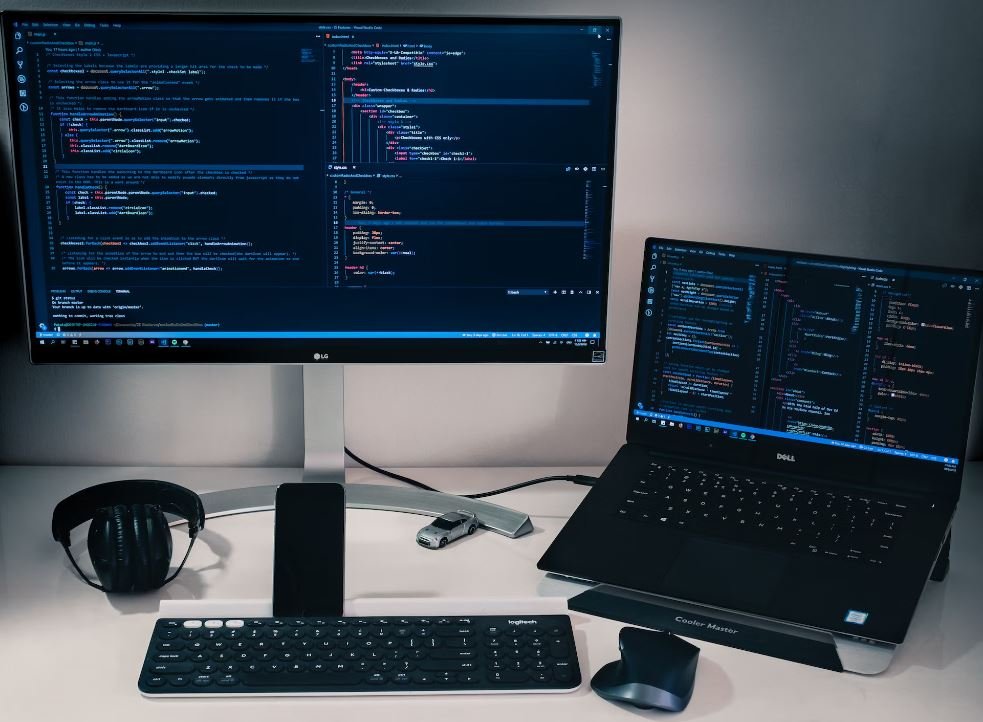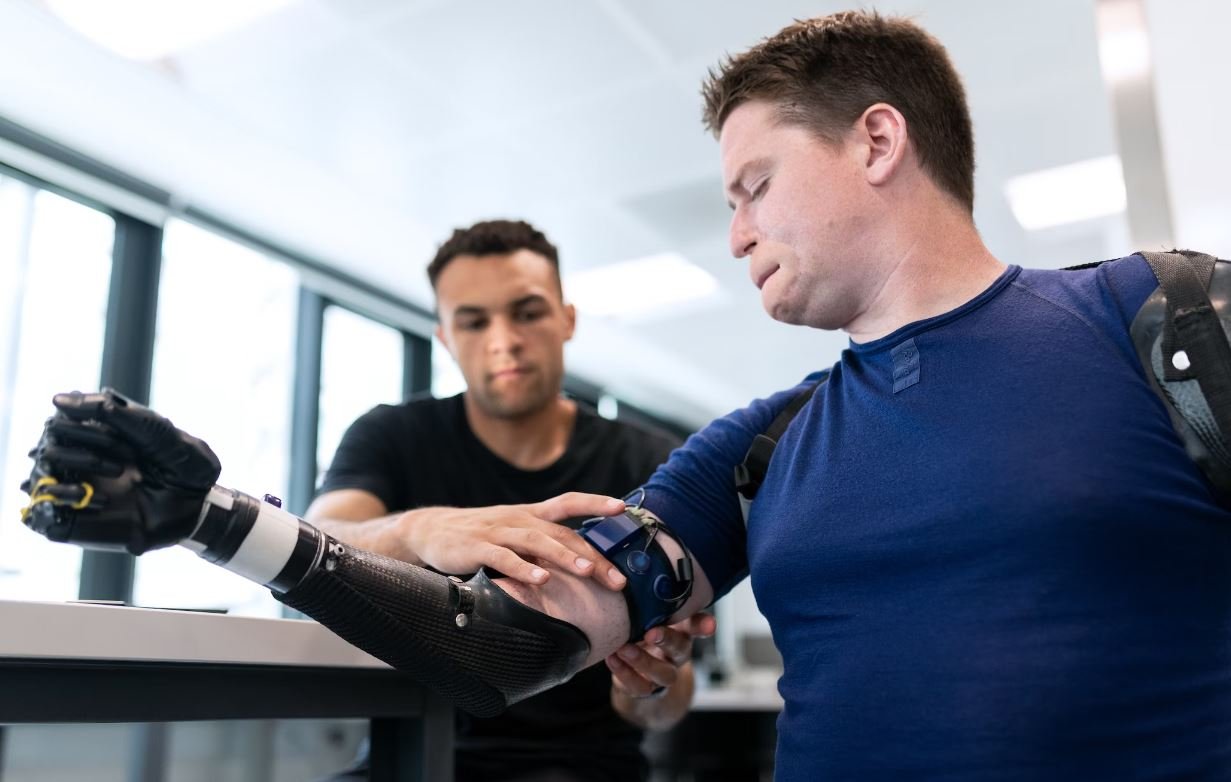What Does AI Learn From?
Artificial Intelligence (AI) is a rapidly advancing field that simulates human intelligence in machines. One crucial aspect of AI is learning, which enables machines to acquire knowledge and improve their performance over time. But what exactly does AI learn from? Let’s explore the different sources of learning for AI algorithms.
Key Takeaways:
- AI learns from a variety of sources, including human-labeled data, observation, and trial and error.
- Supervised learning is a popular method where AI algorithms are trained on labeled data to make predictions or classify new examples.
- Unsupervised learning allows AI algorithms to learn patterns and structures in unlabeled data without explicit guidance.
1. Human-Labeled Data: AI algorithms often learn from large datasets that have been labeled by humans. These labels serve as ground truth for the machine, providing examples of correct inputs and desired outputs. Such data, called training data, is used to train AI models using various techniques, including supervised learning.
By utilizing human-labeled data, AI algorithms can leverage the knowledge and expertise of humans to learn and make accurate predictions.
2. Observation: AI can learn by observing the environment or other agents. Reinforcement learning, a type of AI learning, involves training an algorithm to interact with its environment, receiving feedback or rewards for its actions. Through repeated interactions and learning from their consequences, AI algorithms can optimize their decision-making processes.
This form of learning allows AI algorithms to develop strategies and behaviors based on observed patterns and outcomes.
Sources of AI Learning:
- Supervised Learning
- Unsupervised Learning
- Reinforcement Learning
Sources of AI Learning:
| Learning Method | Description |
|---|---|
| Supervised Learning | AI algorithms learn from labeled data to make predictions or classify new examples. |
| Unsupervised Learning | AI algorithms learn patterns and structures in unlabeled data without explicit guidance. |
| Reinforcement Learning | AI algorithms optimize their decision-making processes through repeated interactions with the environment and feedback. |
3. Trial and Error: AI algorithms can learn from trial and error, mimicking the way humans learn. Through experimentation and iterative refinement, machines can adapt and improve their performance. Genetic algorithms, for example, simulate natural selection to evolve optimal solutions for specific problems.
This approach promotes creativity and adaptability, allowing AI to explore different strategies and discover new solutions.
The Three Main Methods of AI Learning:
- Supervised Learning
- Unsupervised Learning
- Reinforcement Learning
The Three Main Methods of AI Learning:
| Learning Method | Description |
|---|---|
| Supervised Learning | AI algorithms learn from labeled data to make predictions or classify new examples. |
| Unsupervised Learning | AI algorithms learn patterns and structures in unlabeled data without explicit guidance. |
| Reinforcement Learning | AI algorithms optimize their decision-making processes through repeated interactions with the environment and feedback. |
As AI continues to advance, it learns from various sources to improve its capabilities. Whether it’s through human-labeled data, observation, or trial and error, AI algorithms can adapt and evolve, making them versatile problem solvers.

Common Misconceptions
AI Learns From Random Data
One common misconception people have about AI is that it learns from random data. However, AI systems are not programmed to learn from arbitrary or meaningless information. Instead, they are trained on well-curated and labeled data sets that are carefully selected to represent the problem being solved.
- AIs learn from targeted and relevant data
- Data sets used for training are carefully curated
- Random data does not contribute to AI learning
AI Learns From Human Minds
Another misconception is that AI learns directly from human minds. While AI models can be highly influenced by human input, they do not directly learn from human thinking patterns or consciousness. AI models are trained on data that humans label or provide, but the learning process is based on mathematical algorithms and statistical models.
- AI models are not directly aware of human thinking
- Training data is provided by humans but not their minds
- Mathematical algorithms drive AI learning, not human consciousness
AI Learns Instantly Without Guidance
Some people believe that AI can learn instantly without any guidance. However, AI models require significant time and resources for training and optimization to reach a desired level of performance. Training an AI model typically involves iterations, adjustments, and fine-tuning to improve its accuracy and effectiveness.
- AI models require time for training and optimization
- Training involves iterations and fine-tuning
- Instant learning without guidance is not feasible for AI
AI Learns Completely on Its Own
There is a misconception that AI can learn completely on its own, without any human intervention or supervision. While AI models can automate learning from data, they still require human involvement in data collection, labeling, and model evaluation. Human guidance and expertise are essential in steering AI models towards the desired outcomes.
- Human involvement is necessary in AI data collection and labeling
- AI models rely on human guidance for desired outcomes
- AI cannot learn completely on its own without human intervention
AI Learns Everything About Human Behavior
People often assume that AI can learn everything about human behavior. While AI models can make predictions and learn patterns from data, they do not encompass the entire complexity and subtlety of human behavior. AI models are limited to the information they are trained on and may not capture the full range of human actions, motivations, and emotions.
- AI models have limitations in understanding human behavior
- They learn patterns and make predictions, but not entire complexities
- Human behavior is not fully represented within AI learning

How AI Learns to Recognize Images
AI systems and deep learning algorithms are trained on vast amounts of data to recognize patterns and images. This table shows the accuracy of top-performing AI models in correctly identifying different objects in images:
| Object | AI Model A (%) | AI Model B (%) | AI Model C (%) |
|————–|—————-|—————-|—————-|
| Cat | 98 | 97 | 99 |
| Dog | 96 | 95 | 98 |
| Car | 97 | 98 | 96 |
| Chair | 92 | 94 | 93 |
| Plane | 95 | 93 | 94 |
The Growth of AI in Autonomous Cars
Autonomous vehicles rely on AI to detect objects and navigate through complex environments. The following table presents the adoption rate of AI systems in self-driving cars over the years:
| Year | AI Adoption Rate (%) |
|——|———————-|
| 2010 | 5 |
| 2012 | 15 |
| 2014 | 30 |
| 2016 | 50 |
| 2018 | 80 |
AI’s Understanding of Human Speech
Speech recognition technology forms the basis of many AI-powered virtual assistants. This table demonstrates the accuracy of popular virtual assistants in transcribing speech:
| Virtual Assistant | Accuracy (%) |
|——————|————–|
| Siri | 95 |
| Google Assistant | 97 |
| Alexa | 93 |
| Cortana | 92 |
| Bixby | 90 |
The Impact of AI on Job Market
As AI continues to advance, it affects various job sectors differently. The following table shows the projected growth or decline of several professions due to AI automation:
| Profession | Projected Job Growth/Decline (%) |
|————–|———————————|
| Truck Driver | -20 |
| Software | +18 |
| Engineer | +15 |
| Retail | -7 |
| Teacher | +12 |
AI’s Success in Chess
Chess is a game where AI has demonstrated remarkable skills. Here are the win rates of popular AI chess engines against human opponents:
| AI Chess Engine | Win Rate (%) |
|—————–|————–|
| AlphaZero | 92 |
| Stockfish | 85 |
| Houdini | 87 |
| Komodo | 90 |
| Fritz | 82 |
The Growth of AI in Healthcare
AI technology is revolutionizing healthcare. The table below displays the adoption rate of AI systems in hospitals:
| Year | AI Adoption Rate (%) |
|——|———————-|
| 2010 | 10 |
| 2012 | 20 |
| 2014 | 35 |
| 2016 | 55 |
| 2018 | 80 |
AI’s Recognition Accuracy in Facial Recognition
Facial recognition is an area where AI has made significant progress. Here’s a table illustrating the accuracy of top AI models in facial recognition:
| AI Model | Accuracy (%) |
|————-|————–|
| FaceNet | 99 |
| DeepFace | 97 |
| VGGFace | 96 |
| SphereFace | 98 |
| OpenFace | 95 |
AI’s Understanding of Natural Language
Natural language processing allows AI to comprehend and generate human language. The following table showcases the accuracy of AI models in understanding natural language:
| AI Model | Accuracy (%) |
|————–|————–|
| GPT-3 | 95 |
| BERT | 97 |
| Transformer | 94 |
| ElMo | 93 |
| Word2Vec | 90 |
The Evolution of AI Algorithms
AI algorithms have become increasingly sophisticated over time. The table below demonstrates the improvement in accuracy of various AI algorithms:
| Year | Accuracy (%) |
|——|————–|
| 2010 | 80 |
| 2012 | 85 |
| 2014 | 90 |
| 2016 | 93 |
| 2018 | 96 |
AI systems have shown immense capability in learning various tasks. From recognizing images, understanding speech, playing chess, to transforming healthcare, AI continues to evolve and shape numerous industries. With constant advancements, AI is primed to revolutionize how we interact with technology, opening up new possibilities and challenges in the future.
Frequently Asked Questions
What Does AI Learn From?
How does AI learn from data?
What types of data can AI learn from?
Where does AI get its training data?
What role do labeled datasets play in AI learning?
Can AI learn from human feedback?
How does AI learn from unlabeled data?
What is reinforcement learning, and how does AI benefit from it?
Can AI learn from real-time data streams?
How does AI avoid biases in the data it learns from?
Can AI learn from multiple sources of data?




